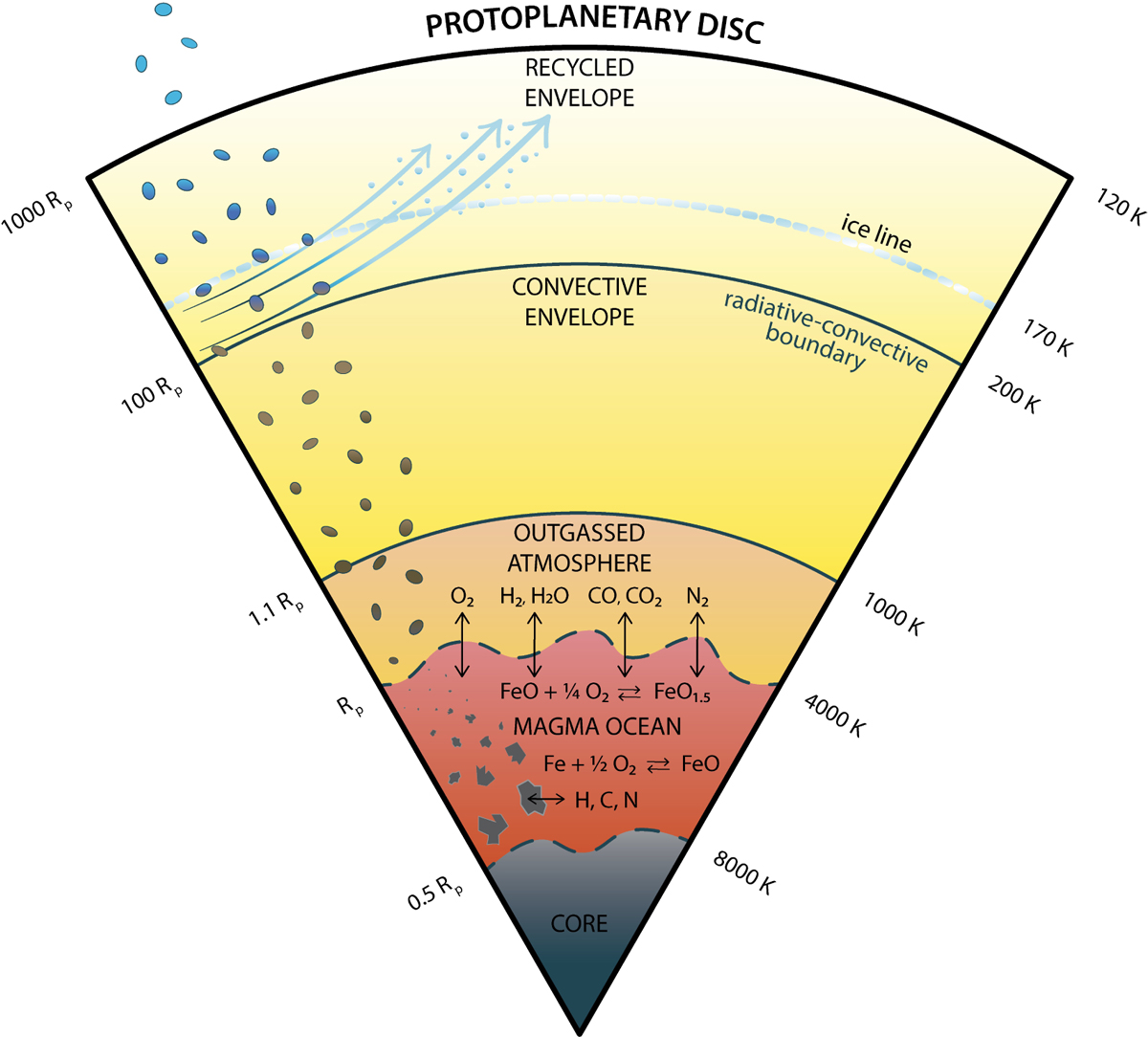Fig. 1

Download original image
Overview of the core, mantle, atmosphere and envelope of a rocky planet growing by rapid pebble accretion. The protoplanetary disc flows penetrate through the recycled part of the envelope, carrying along water vapour released at the ice line at T ~ 170 K back to the protoplanetary disc. The radiative-convective boundary at T ~ 200 K marks the transition to a bound, convective envelope. The desiccated pebbles sediment through the convective gas down to the outgassed atmosphere. The atmosphere is in vapour equilibrium with the silicate magma ocean and pebbles therefore survive until they plunge into the magma ocean. Here the metal separates from the silicates and metal blobs coalesce and sediment to the core. There is an equilibrium between the concentration of volatiles H, C and N in the magma ocean and the outgassed atmosphere. The speciation of the volatiles in the atmosphere depends on the oxygen fugacity of the magma ocean, which is set by the iron–wüstite buffer Fe + (1/2) O2 ⇋ FeO. The lower regions of the magma ocean undergo additional oxidation by the process FeO + (1/4) O2 ⇋ FeO1.5. Finally, the volatiles H, C, and N are all siderophile and partition primarily into metallic melt over silicate melt. This results in a core that holds the main reservoirs of H and C, while N has so low solubility in magma that the atmosphere is the dominant reservoir of nitrogen.
Current usage metrics show cumulative count of Article Views (full-text article views including HTML views, PDF and ePub downloads, according to the available data) and Abstracts Views on Vision4Press platform.
Data correspond to usage on the plateform after 2015. The current usage metrics is available 48-96 hours after online publication and is updated daily on week days.
Initial download of the metrics may take a while.


